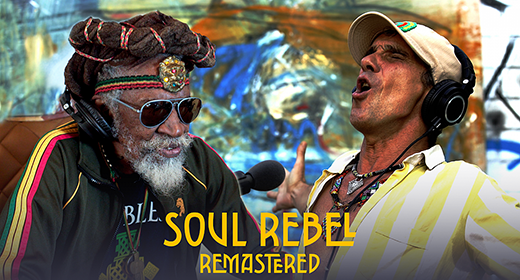by Richard Paterson: To realise that you are not your thoughts is when you begin to awaken spiritually —Eckhart Tolle
Realising you are not your thoughts is a life-changing discovery, a pivotal moment in each person’s spiritual journey.
It struck me for the first time in 1997, after reading “The Power Of Now” by Eckhart Tolle. I had read many transformational books before that, but this one blew my mind.
More accurately, it blew apart my ideas of what I thought the mind was.
Here is an excerpt from the book:
“The mind is a superb instrument if used rightly. Used wrongly, however, it becomes very destructive. To put it more accurately, it is not so much that you use your mind wrongly — you usually don’t use it at all. It uses you. This is the disease. You believe that you are your mind. This is the delusion. The instrument has taken you over.”
The notion that you are not your thoughts is a radical one. It goes against everything we have been conditioned to believe all our lives.
Everything in your experience would suggest otherwise. Your thoughts appear in your head. They are known only to you. They speak in your voice. How could they not be who you are?
Let’s take a closer look. There is more to the picture.
Thoughts Are Only A Small Part Of Your Experience
I invite you to try the following guided meditation, one of my favourites. It offers an interesting perspective on our relationship with thoughts (you’ll find an audio version below).
First, find a comfortable position. Sitting or lying down are both fine.
Take a few deep breaths and as you exhale, do so with a sense of releasing, a sense of letting go.
Be here now, just as you are.
Now, temporarily put aside all thoughts of who you are, any image you have of yourself, any ideas associated with a personal identity—all notions such as male or female, rich or poor, young or old.
Now empty yourself of any concepts, beliefs or knowledge you have about the world.
Put aside all ideas of good or bad, true or false, right or wrong— any self-judgement, anything you feel proud or ashamed of, any achievements or failures,
Set aside all memories of the past — as if you had just arrived on earth in this moment. Put aside all thoughts of the future.
Who are you without a past or a future?
Simply be present here and now, just as you are—breathing in, breathing out.
Stripped of all these concepts, ideas and beliefs, is there still a ‘you’ present?
How would you describe the ‘you’ that remains? Aware? Present? Conscious?
How does it feel? Peaceful? Empty? Expansive?
Is there anything you have put aside that, if you were to take it back, would enhance your experience of this moment?
If You Are Your Thoughts, Who Is The One Watching?

When you learn to meditate, the first thing you learn is to take a step back and watch the mind objectively—with an attitude of curiosity. You become aware that, “there is the mind doing it’s thing and here am I, watching.”
One of the first things you notice is that thoughts are self-arising. They appear by themselves, apparently out of nowhere, linger in your awareness for a moment or two and then disappear again— like clouds passing across the sky.
You have no idea what the next thought will be. You could say they are impersonal, in that you play no part in their appearance and disappearance. The mind has a mind of its own.
Just as clouds of all shapes and sizes float across the unchanging sky, all kinds of thoughts come and go against the backdrop of your unchanging awareness.
Happy thoughts appear, sad thoughts appear but awareness itself doesn’t change. Thoughts are many, awareness is one. It has no beginning or end. It has no preferences and remains unaffected by whatever thoughts pass through.
The ‘you’ you take yourself to be today is very different from the 10 year-old, 20 year-old or 40 year-old you. And yet, the awareness that is aware of thoughts (feelings and emotions too) hasn’t changed one bit. In spiritual parlance, it is immutable, immaculate, eternal.
Some traditions say that who you really are existed before the appearance of this body and will continue to exist long after it is gone—that the body is a garment you wear for this lifetime and thoughts are part of the package that comes with it.
I go into this topic in more detail in my book “Awaken The Happy You.”
“When you observe the mind, you begin to realise there is a vast realm of intelligence beyond thought, that thought is only a tiny aspect of that intelligence. You also realise that all the things that truly matter — beauty, love, creativity, joy, inner peace — arise from beyond the mind. You begin to awaken.” Eckhart Tolle
What About Your Feelings And Emotions?
The Sedona Method is a powerful technique for letting go of troublesome thoughts, feelings and emotions. It is well worth checking out.
In his introduction to the method, the founder, Hale Dwoskin, uses a great analogy to illustrate our true relationship with the mind. You might want to try this exercise?
- take a pen and roll it back and forth in the palm of your open hand.
The pen represents any thoughts, feelings or emotions that are present right now. Your hand represents YOU, awareness.
Note that the pen isn’t attached to your hand. The passing thoughts, feelings and emotions are not who you are. They are temporary events arising in awareness.
- now grip the pen tightly.
This is what we do when we grab onto thoughts— when we identify with them, believe they are who we are and struggle against them.
- now turn your hand to face the floor, unclench your fist, and allow the pen to fall.
Because the pen is not part of the hand, you can choose to drop it in any moment.
Your thoughts, feelings and emotions are not who you really are. They may be a part of who you are in this moment. In the next moment, however, they may or may not be there.
If they were part of your essential nature, they would always be present. You wouldn’t be free of them even for a single moment.
This is clearly not the case. Everyone, regardless of how troubled they are, experiences moments of joy, of laughter, of OK-ness.
It’s the same with your emotions. You say “I am angry” rather than, “anger is there just now”. You identify with the anger.
If you really were your anger, your sadness or the broken person your mind would have you believe you are, it would be your continuous experience.
You suffer, not because anger or sadness is present, but because you mistake temporary states as being who you are. You personalise them and suffer as a result.










































